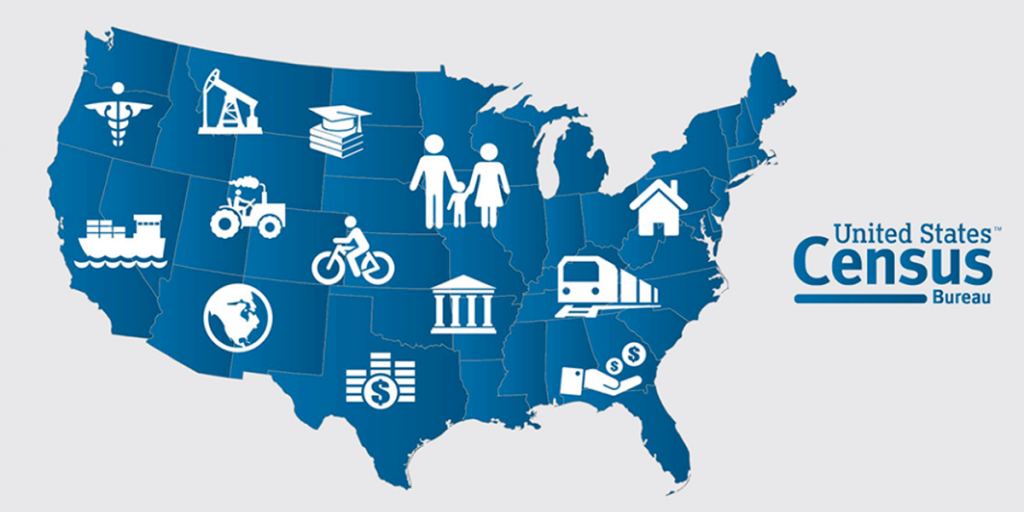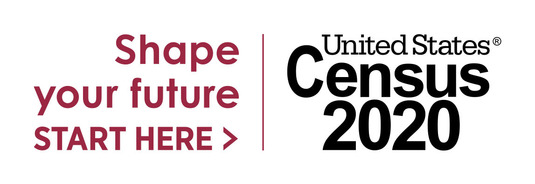Census Data: Indispensable Intelligence for the Nation
In today’s data-rich, technology-driven world, the decennial counting of every person in the United States may seem archaic. However, the census is unique as it counts everybody living in the U.S. and is the foundation for all data collections. On the government side, census data informs how congressional districts are redrawn and determines where government funds go. On the private sector side, businesses use the data to decide where they should set up shop. Institutions big and small use census-derived data to decide how to set goals, distribute resources, and evaluate outcomes. An accurate census is critical for all.

The U.S. is not alone in conducting a census. Most countries around the world perform some type of enumeration at least once every 10 years, and some once every five years. Others like Germany and Scandinavian countries use a constantly updated register-based census model, in which existing data is collected from administrative registries, such as municipalities and federal employment agencies to track population change.
Federal statistics
The data collected through the decennial census is the basis for many federally- produced statistics. These data products fuel the decisions of multiple government departments and agencies and serve as the basis for policy direction and evaluation.
Besides the actual census results, data from the decennial Census form a crucial base for the sample designs of other national surveys such as the Current Population Survey (the source of the nation’s unemployment statistics), the Consumer Expenditure Survey (calculating the Consumer Price Index), and statistics compiled by the National Center for Educational Statistics (NCES) and the National Center for Health Statistics (NCHS). In order to measure an outcome, these datasets need a total amount or denominator in order to extrapolate their survey results to the total population – a number which is provided by the decennial census. For example, NCHS uses its own survey data combined with Census data to calculate numerous vital statistics, such as birth and deaths, and local rates for health care usage. Similarly, the Bureau of Justice Statistics uses Census data to calculate imprisonment and victimization rates, and the Federal Bureau of Investigation uses Census data to calculate crime rates. The NCES uses Census data to produce education indicators such as school quality and performance.
Perhaps the most widely used dataset produced by the US Census Bureau is the American Community Survey (ACS). Since 2005, in order to provide communities, businesses and the public with detailed information more frequently, data that was historically collected once every 10 years by the decennial census long form have been collected monthly (and released annually) through the ACS. The ACS includes more comprehensive statistics that include ancestry, educational attainment, income, language proficiency, migration, disability, employment, and housing characteristics. Unlike the decennial census, which is a complete count, the ACS is a survey – sampling the population and producing estimates. These estimates are benchmarked based on the complete count performed by the decennial census and therefore reliant on its accuracy.
It is Important to note that no identifying information is shared when used by other government agencies. Census information on individuals is strictly protected by federal law and cannot be shared with anyone, not with the Immigration and Customs Enforcement, IRS, FBI, the CIA, or with any other government agency.
Businesses
Census information is crucial for businesses. In an increasingly data-driven environment, accurate and comprehensive demographic information about consumers and markets are critical. In addition, nearly all commercial databases benchmark to population counts from the decennial census. Such data is then used by corporations and non-profits to make better strategy, marketing, and development decisions.
Census data inform important decisions, such as where to locate facilities and what products to offer in particular locations. For example, want to know how many people live within a 3-mile radius of a high-traffic intersection? Census Bureau data can tell you, along with their ethnic make-up and average age. Retailers utilize information on residents who will become the support network of their business. Real estate agents use local demographics to balance housing markets and prices, and firms use them to negotiate locations and lease rates. The decennial census supplies business owners with critical data to make smart decisions.
Amazon’s decision in selecting the site for their second headquarters (HQ2) was not solely influenced by incentives. More central to Amazon’s motivation was location; specifically, the demographics surrounding that location, such as education level, age structure, housing characteristics, etc. The American Community Survey is the most comprehensive, comparable, and complete source for this type of data – all of which is reliant on an accurate decennial census count.
Local Communities
Communities rely on census statistics to plan for a variety of resident needs, including new roads, schools, and emergency services. Census data inform projections of population, household size, and residential patterns that together will present patterns of home ownership and provide a basis for estimating housing needs. Local governments and planning organizations routinely rely on data from the census to allocate funding, define where services are delivered, and encourage economic development. Individual residents can make better choices about home-buying, job relocation, or starting a small business if they can take advantage of accurate census information.
Age-related data from the census help communities set up and administer assistance programs for children, teens, and older persons. Growth in the number of school-aged children could facilitate the need for new schools. An aging population in a region may facilitate the need for nursing homes, clinics, and public transportation and health services in that area.
The more we know about the people in the community, the better local authorities can understand and meet their needs. With an accurate census, informed decisions can be made to promote community efficiency, safety, and development.
Social research
The census data is one of the most important sources of U.S. data for social research. This is exceptionally important due to projected increases in diversity and aging of the population moving forward.
Census data is indispensable for a wide range of research questions – used for extensive research into U.S. society, the economy, the workforce, housing stock, and population distribution, as well as the characteristics of the nation and its various regions.
The census is the only source of comparable data for all geographic regions in the nation. For example, we can reliably compare the number of African American households between any two counties in the country, or track the growth in the number of school-aged children in a locality over time. Similarly, for many purposes, it is the only large-scale source of data for small groups of population, such as immigrants and same-sex couples. Much of our knowledge of social transformations over recent decades has been obtained from analyses of census data.
Census data is essential in the identification of patterns and rates of change that allow projections into the future size, characteristics, and distribution of the population. These projections have fundamental importance to the formulation and evaluation of public policy. For example, the Weldon Cooper Center uses the data as crucial inputs in its National and Virginia population projections which are used throughout the Commonwealth and the U.S. for decision-making and fund allocation.

The census provides critical, indispensable intelligence for governments, businesses, non-profits, and the public. It is the foundation of most data and a foundation of our society. An unsuccessful census can have far-reaching consequences; decisions are only as good as the intelligence informing them.


